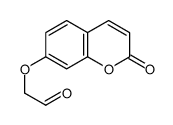Angelicin

Angelicin structure
|
Common Name | Angelicin | ||
|---|---|---|---|---|
| CAS Number | 523-50-2 | Molecular Weight | 186.163 | |
| Density | 1.4±0.1 g/cm3 | Boiling Point | 362.6±27.0 °C at 760 mmHg | |
| Molecular Formula | C11H6O3 | Melting Point | 132-134ºC | |
| MSDS | Chinese USA | Flash Point | 173.1±23.7 °C | |
| Symbol |


GHS07, GHS08 |
Signal Word | Warning | |
Use of AngelicinAngelicin, a furocoumarin naturally occurring tricyclic aromatic compound, structurally related to psoralens, is reported to have anti-cancer, antiviral, anti-inflammatory activity. IC50 value: 49.56 μM (cellular cytotoxicity); 5.39 μg/ml (28.95 μM) (against MHV-68)Target: In vitro: In human SH-SY5Y neuroblastoma cells, angelicin increased cellular cytotoxicity in a dose- and time-dependent manner with IC50 of 49.56 μM at 48 h of incubation. Angelicin dose-dependently downregulated the expression of anti-apoptotic proteins including Bcl-2, Bcl-xL, and Mcl-1; Angelicin-induced apoptosis is mediated primarily through the intrinsic caspase-mediated pathway[1]. Angelicin efficiently inhibited 12-O-tetradecanoylphorbol-13-acetate (TPA)-induced lytic replication of human gammaherpresviruses in both EBV- and KSHV-infected cells [2]. Angelicin was potentially advantageous to prevent inflammatory diseases by inhibiting NF-κB and MAPK pathways [3].In vivo: |
| Name | angelicin |
|---|---|
| Synonym | More Synonyms |
| Description | Angelicin, a furocoumarin naturally occurring tricyclic aromatic compound, structurally related to psoralens, is reported to have anti-cancer, antiviral, anti-inflammatory activity. IC50 value: 49.56 μM (cellular cytotoxicity); 5.39 μg/ml (28.95 μM) (against MHV-68)Target: In vitro: In human SH-SY5Y neuroblastoma cells, angelicin increased cellular cytotoxicity in a dose- and time-dependent manner with IC50 of 49.56 μM at 48 h of incubation. Angelicin dose-dependently downregulated the expression of anti-apoptotic proteins including Bcl-2, Bcl-xL, and Mcl-1; Angelicin-induced apoptosis is mediated primarily through the intrinsic caspase-mediated pathway[1]. Angelicin efficiently inhibited 12-O-tetradecanoylphorbol-13-acetate (TPA)-induced lytic replication of human gammaherpresviruses in both EBV- and KSHV-infected cells [2]. Angelicin was potentially advantageous to prevent inflammatory diseases by inhibiting NF-κB and MAPK pathways [3].In vivo: |
|---|---|
| Related Catalog | |
| References |
| Density | 1.4±0.1 g/cm3 |
|---|---|
| Boiling Point | 362.6±27.0 °C at 760 mmHg |
| Melting Point | 132-134ºC |
| Molecular Formula | C11H6O3 |
| Molecular Weight | 186.163 |
| Flash Point | 173.1±23.7 °C |
| Exact Mass | 186.031693 |
| PSA | 43.35000 |
| LogP | 2.01 |
| Vapour Pressure | 0.0±0.8 mmHg at 25°C |
| Index of Refraction | 1.667 |
| Storage condition | 2-8°C |
CHEMICAL IDENTIFICATION
HEALTH HAZARD DATAACUTE TOXICITY DATA
MUTATION DATA
|
| Symbol |


GHS07, GHS08 |
|---|---|
| Signal Word | Warning |
| Hazard Statements | H302 + H312 + H332-H315-H319-H335-H351 |
| Precautionary Statements | P261-P280-P305 + P351 + P338 |
| Personal Protective Equipment | Eyeshields;Faceshields;full-face particle respirator type N100 (US);Gloves;respirator cartridge type N100 (US);type P1 (EN143) respirator filter;type P3 (EN 143) respirator cartridges |
| Hazard Codes | Xn:Harmful; |
| Risk Phrases | R20/21/22;R36/37/38;R40 |
| Safety Phrases | S26-S36/37/39 |
| RIDADR | NONH for all modes of transport |
| WGK Germany | 3 |
| RTECS | LV0940000 |
| HS Code | 2932999099 |
| HS Code | 2932999099 |
|---|---|
| Summary | 2932999099. other heterocyclic compounds with oxygen hetero-atom(s) only. VAT:17.0%. Tax rebate rate:13.0%. . MFN tariff:6.5%. General tariff:20.0% |
|
Bioactivity-guided isolation of antimicrobial coumarins from Heracleum mantegazzianum Sommier & Levier (Apiaceae) fruits by high-performance counter-current chromatography.
Food Chem. 186 , 133-8, (2015) An efficient strategy, based on bioassay-guided fractionation, high-performance liquid chromatography (HPLC), and high-performance counter-current chromatography (HPCCC), was established to purify and... |
|
|
Application of the equivalency factor concept to the phototoxicity and –genotoxicity of furocoumarin mixtures
Food Chem. Toxicol. 68 , 257-66, (2014) • The photo-cytotoxic, -mutagenic, and -clastogenic properties in V79 cells of thirteen furocoumarins (FCs), were analyzed. • Nine FC mixtures including one mixture ‘representing’ FCs in Angelica arch... |
|
|
F420H2-dependent degradation of aflatoxin and other furanocoumarins is widespread throughout the actinomycetales.
PLoS ONE 7(2) , e30114, (2012) Two classes of F(420)-dependent reductases (FDR-A and FDR-B) that can reduce aflatoxins and thereby degrade them have previously been isolated from Mycobacterium smegmatis. One class, the FDR-A enzyme... |
| 2H-Furo[2,3-h][1]benzopyran-2-one |
| 4-Hydroxy-5-benzofuranacrylic acid γ-lactone |
| Furo[2,3-h]benzopyran-2-one |
| EINECS 201-480-6 |
| 2-Oxo-(2H)-furo(2,3-h)-1-benzopyran,2H-Furo[2,3-h]-1-benzopyran-2-one |
| ISOPSORALENE |
| Isopsoralen |
| ANGELICINE |
| angecin |
| 2-Oxo-(2H)-furo(2,3-h)-1-benzopyran 2H-Furo[2,3-h]-1-benzopyran-2-one |
| T B566 EO LVOJ |
| MFCD00064930 |
| 2H-Furo[2,3-h]chromen-2-one |
| 2H-Furo[2,3-h]-1-benzopyran-2-one |
| isopsoralin |
| Angelicin |
| ISOBERGAPTEN |
![(2H)-furo[2,3-h]-1-benzopyran Structure](https://image.chemsrc.com/caspic/263/233-28-3.png) CAS#:233-28-3
CAS#:233-28-3![3-phenylsulfanyl-3,4-dihydro-2H-furo[2,3-h]chromen-6-ol Structure](https://image.chemsrc.com/caspic/453/112183-09-2.png) CAS#:112183-09-2
CAS#:112183-09-2![6-[(trifluoromethyl)sulfonyl]-3-(phenylthio)-(2,3,4H)-furo[2,3-h]-benzopyran Structure](https://image.chemsrc.com/caspic/115/112183-05-8.png) CAS#:112183-05-8
CAS#:112183-05-8 CAS#:1361944-38-8
CAS#:1361944-38-8![3-(phenylthio)-(2,3,4H)-furo[2,3-h]-1-benzopyran Structure](https://image.chemsrc.com/caspic/491/112183-08-1.png) CAS#:112183-08-1
CAS#:112183-08-1 CAS#:16851-02-8
CAS#:16851-02-8
